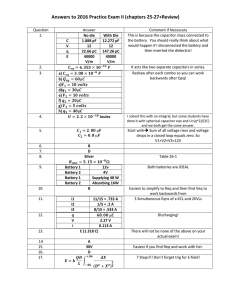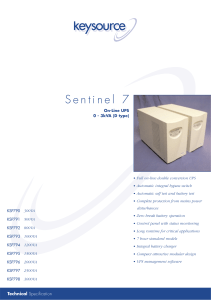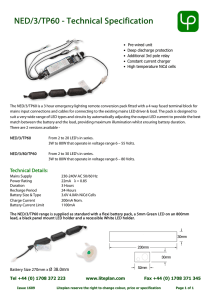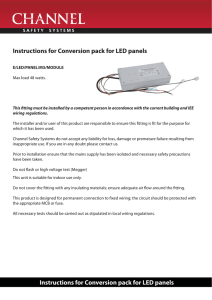Episode 105-3: Measuring potential difference (Word, 40 KB)
advertisement
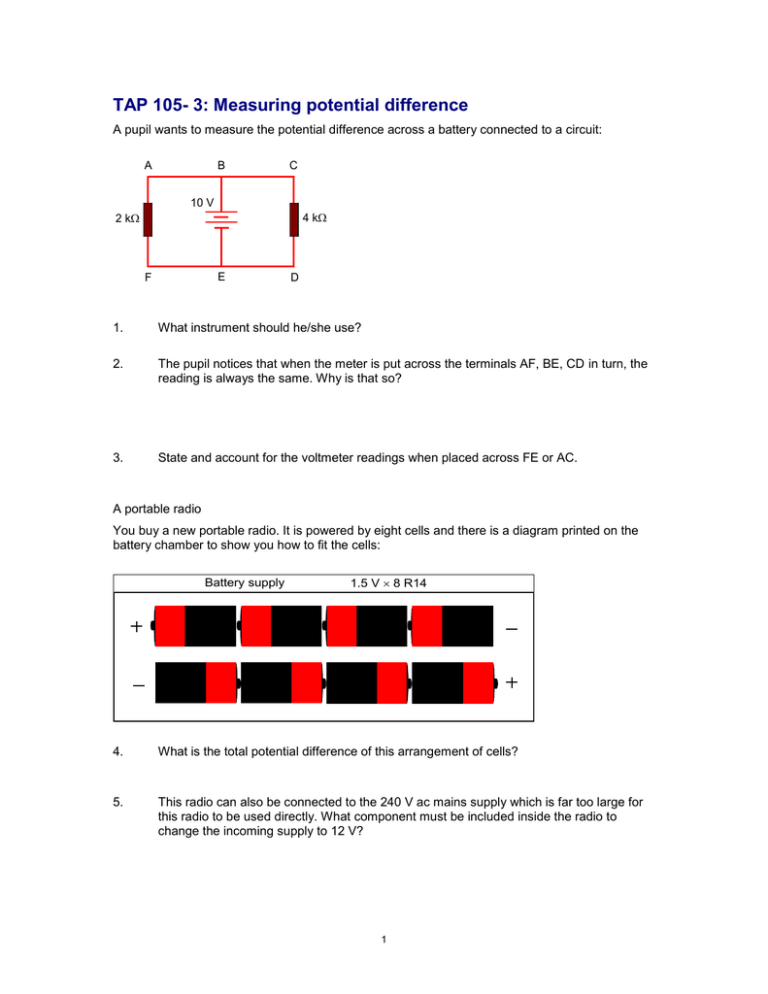
TAP 105- 3: Measuring potential difference A pupil wants to measure the potential difference across a battery connected to a circuit: A B C 10 V 4 k 2 k E F D 1. What instrument should he/she use? 2. The pupil notices that when the meter is put across the terminals AF, BE, CD in turn, the reading is always the same. Why is that so? 3. State and account for the voltmeter readings when placed across FE or AC. A portable radio You buy a new portable radio. It is powered by eight cells and there is a diagram printed on the battery chamber to show you how to fit the cells: Battery supply 1.5 V 8 R14 4. What is the total potential difference of this arrangement of cells? 5. This radio can also be connected to the 240 V ac mains supply which is far too large for this radio to be used directly. What component must be included inside the radio to change the incoming supply to 12 V? 1 6. Battery and mains supplies vary in potential difference. State one other significant difference. 2 Answers and worked solutions to measuring potential difference 1. Voltmeter 2. The answer could be ‘the pd across all parallel branches is the same’ or ‘the potential at the points A, B and C is the same (assuming the connecting leads have negligible resistance). The potentials at the three points F, E and D are equal but differ from A, B and C. Therefore the potential difference between the stated pairs must be the same.’ 3. Following the argument above there is no potential difference between the specified pairs and the reading will be 0 V. 4. 12 V 5. Step-down transformer 6. Mains supply is an alternating supply; battery supplies direct current; mains supply is at 230 V, batteries usually produce much lower emf. External references This activity is taken from Advancing Physics Chapter 2, 30S 3






